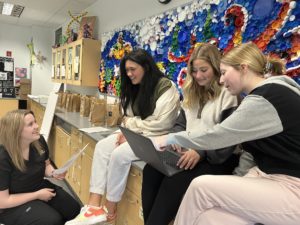Conservation Conflicts in a Complex World

To view the photo-rich magazine version, click here.
Originally appears in the Spring 2022 issue.
By Annie Zaremba
Like most things in life, conservation is not black and white. There is no one-size-fits-all approach to solving the environmental issues that threaten our world’s biodiversity. Successful conservation actions involve creativity, collaboration, and resilience — skills not readily learned by reading a textbook. This project-based learning lesson for high school students challenges learners to view the impacts of invasive species from the perspectives of various stakeholders to help students develop management plans that protect local biodiversity, while also preventing social conflict.
When invasive species become highly abundant, they can influence the biodiversity of an ecosystem and even produce irreversible changes.1 Invasive species may outcompete native species for resources, increase erosion, or heighten fire and flood rates. These changes can reduce biodiversity, negatively impact the economy, and threaten human well-being.2 Despite these realities, certain social groups often experience benefits from invasive species. Some invasive species have utilitarian, moral, spiritual, cultural, or aesthetic values that make developing management plans more complex.3
When conflicting attitudes exist toward an invasive species, those who create management plans must take into account both the social and ecological factors surrounding the issue.4 If social factors are ignored or placed second to the scientific aspects of management, long-standing conflicts may develop and sow resentment among social groups. These conflicts can escalate to a level that not only damages the social cohesion of a community, but also the outcomes of the management plan.4
This content is restricted to subscribers only.
If you are not yet a subscriber, please consider taking out a subscription here.
If you are an existing subscriber, kindly log in or contact us at info@greenteacher.com for more information.





